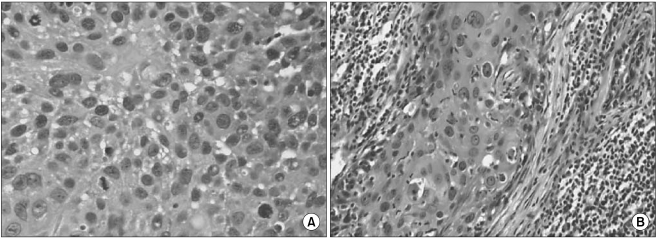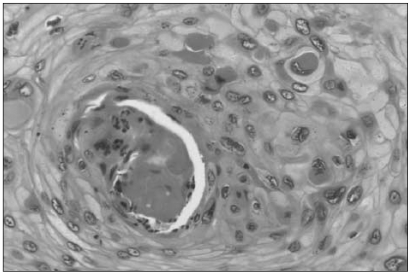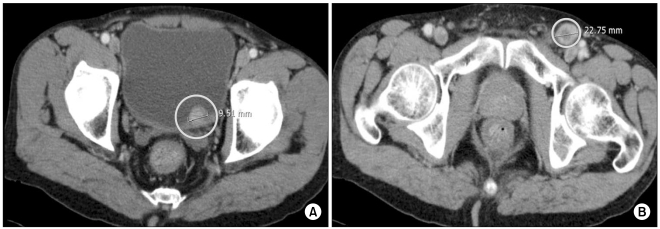1. Billroth T. General surgical pathology and therapeutics in 51 Vorlesungen: a textbook for students and physicians in fifty-one lectures. 1889. 14th ed. Berlin, DE: G. Rerimer.
2. Warren S, Gates O. Multiple primary malignant tumors; Surgery of literature and statistical study. Am J Cancer. 1932; 16:1358–1414.
3. Wegner HE. Multiple primary cancers in urologic patients: Audit of 19-year experience in Berlin and review of the literature. Urology. 1992; 39:231–236. PMID:
1546416.

4. Lee C, Lee ES, Choi H, Koh SK, Lee JM, Chai SE, et al. Incidence estimation of genitourinary cancer in Korea. J Korean Med Sci. 1992; 7:154–161. PMID:
1524728.

5. Barnholtz-Sloan JS, Maldonado JL, Pow-sang J, Giuliano AR. Incidence trends in primary malignant penile cancer. Urol Oncol. 2007; 25:361–367. PMID:
17826651.

6. Kim WJ, Chung JI, Hong JH, Kim CS, Jung SI, Yoon DK. Epidemiological study for urologic cancer in Korea (1998-2002). Korean J Urol. 2004; 45:1081–1088.
7. Kakizaki H, Abe Y, Sugano O, Kato H. A hundred cases of multiple primary neoplasms in association with genitourinary cancer. Nippon Hinyokika Gakkai Zasshi. 1992; 83:1841–1846. PMID:
1479754.

8. Kim CK, Chang JW. Multiple primary malignant tumors. J Korean Surg Soc. 1970; 12:63–71.
9. Koo DJ, Yun DS, Lee JJ, Park CJ. Clinical analysis of 65 multiple primary cancer cases. J Korean Surg Soc. 1999; 56:137–142.
10. Kang HJ, Choi S, Kim JC, Rhew HY. Multiple primary malignant neoplasms in genitourinary tract. Korean J Urol. 1994; 35:1265–1270.
11. Moertel CG, Dockerty MB, Baggenstoss AH. Multiple primary malignant neoplasm. II. Tumors of different tissues or organs. Cancer. 1961; 14:231–237. PMID:
13771653.
12. Matzkin H, Braf Z. Multiple primary malignant neoplasms in the genitourinary tract: occurrence and etiology. J Urol. 1989; 142:1–12. PMID:
2659818.

13. Dillner J, von Krogh G, Horenblas S, Meijer CJ. Etiology of squamous cell carcinoma of the penis. Scand J Urol Nephrol Suppl. 2000; 205:189–193. PMID:
11144896.

14. Weinberg DM, Ross RK, Mack TM, Paganini-Hill A, Henderson BE. Bladder cancer etiology. A different perspective. Cancer. 1983; 51:675–680. PMID:
6821840.

15. Martins FE, Rodrigues RN, Lopes TM. Organ-preserving surgery for penile carcinoma. Adv Urol. 2008; 634216. PMID:
19009032.






 PDF
PDF Citation
Citation Print
Print




 XML Download
XML Download